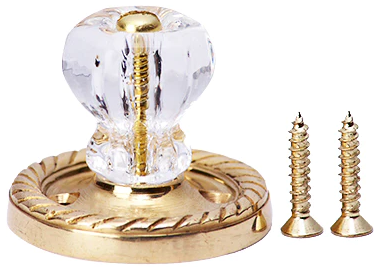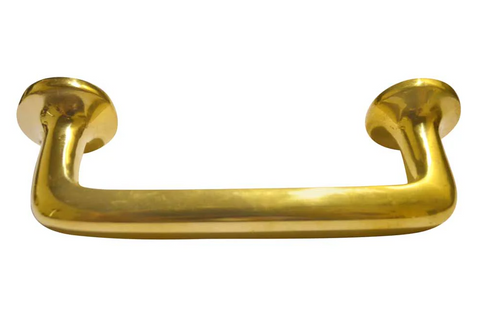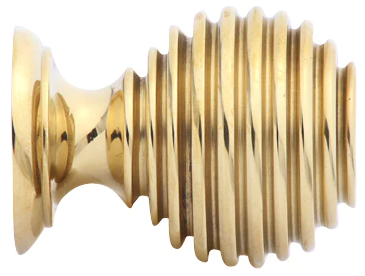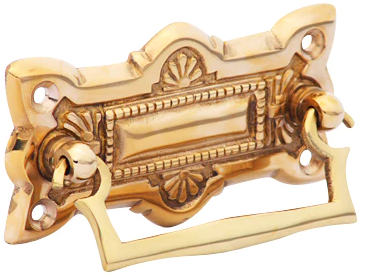Unlacquered Hardware in Kitchens
Designing a kitchen is a task that requires careful consideration of every detail. The materials used, the color scheme, and even the hardware that adorns the cabinetry can make a drastic difference in the overall aesthetic of the room. One design choice that has become increasingly popular in recent years is the use of unlacquered brass hardware in kitchens.
Unlacquered brass is a term used to describe brass that has not been coated with a lacquer or protective layer. Over time, the brass will develop a natural patina, giving it a unique and rustic look. This type of hardware has been used for centuries in various applications, but it has recently gained popularity in kitchen design due to its timeless and versatile appeal.
In this article, we will explore the benefits and drawbacks of using unlacquered brass hardware in kitchen design and offer tips and design ideas on how to incorporate this trend into your own kitchen.

Benefits of Unlacquered Brass Hardware:
One of the most significant benefits of using unlacquered brass hardware in a kitchen design is its timeless appeal. Brass was a popular choice for hardware in the early 20th century and was used in many classic designs. Using unlacquered brass hardware in your kitchen can add a vintage feel to the room, paying homage to past styles and creating a sense of warmth and nostalgia.
Another advantage of unlacquered brass hardware is its versatility. This material can be used in a variety of design styles, from vintage to modern, and can be paired with various color schemes and materials. Unlacquered brass hardware can also be customized to match a specific design by adding finishes or distressing techniques.
Moreover, with unlacquered brass hardware, you can enjoy the natural aging process of the material, which can add character and personality to the room. Over time, the brass will age and develop a patina, which is a surface discoloration resulting from oxidation. This patina can give the hardware a unique and rustic appearance, adding charm and character to the cabinetry.

Drawbacks of Unlacquered Brass Hardware:
While unlacquered brass hardware has many benefits, it is important to consider the drawbacks before committing to this design choice. One drawback of unlacquered brass hardware is that it requires regular maintenance. Unlike lacquered brass, which is coated with a protective layer to prevent tarnishing, unlacquered brass will develop a patina over time and requires polishing to maintain its shine.
Moreover, unlacquered brass hardware is more susceptible to scratching and wear and tear than other materials, like stainless steel or lacquered brass. This means that the hardware may need to be replaced or refinished more frequently than other materials, which can be costly and time-consuming.
Additionally, unlacquered brass may not be the ideal choice for those who prefer a clean and polished look. The patina that develops with time can create a rustic and aged appearance, which may not be suitable for some design styles.

Tips on Incorporating Unlacquered Brass Hardware into Kitchen Design:
If you are considering incorporating unlacquered brass hardware into your kitchen design, there are some tips and tricks that can help you achieve the desired look.
- Choose the Right Finish: Unlacquered brass hardware can be customized to match the desired finish, whether it be polished, brushed, or aged. However, it is important to consider how the finish will work with the overall design of the kitchen. A highly polished finish may not work well with a rustic and vintage-inspired design, while an aged finish may clash with a modern and sleek design.
- Match with Other Materials: Unlacquered brass hardware works well with a variety of materials, but it is important to consider how the brass will work with other details in the kitchen. For example, if the cabinetry is made of wood, the unlacquered brass can work well to accentuate the natural grain of the wood. On the other hand, if the countertop is made of a material that clashes with brass, such as granite, it may be best to consider a different material for the hardware.
- Balance with Other Colors: When incorporating unlacquered brass hardware into a color scheme, it is important to balance the brass with other colors in the room. Brass is a warm-toned material, so it works best with other warm colors, such as cream or beige. However, cooler colors, such as blue or gray, can also work well with brass if balanced correctly.

While it may seem daunting to incorporate a new design element into your kitchen, using unlacquered brass hardware can add personality, charm, and warmth to the room. By carefully considering the benefits and drawbacks, choosing the right finish, matching with other materials, and balancing with other colors, you can create a kitchen design that is timeless and unique.























Leave a comment